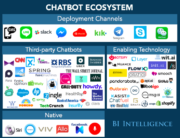You’ve worked hard to establish a presence in the marketplace and grow your brand. And, you have a clear understanding of the many challenges that companies face in today’s competitive climate. It’s also likely that you’ve implemented various efficiencies to stay ahead of the game.
All good business leaders keep tabs on spending, especially staffing costs that can easily get out of hand. And since outsourcing has become so prominent in recent years, it’s important to utilize effective onboarding and offboarding systems for contract workers. More importantly, these systems should integrate with a company’s existing systems, allow for the easy governance of contracts, and facilitate a good relationship between the company and the contingent workforce.
It’s probable that you’re using a Vendor Management System (VMS) to handle all this for you. At C.Soluxions, we have years of experience utilizing the leading VMS solutions for managing the entire staffing process. Below, we reveal why VMS optimizations are important and how to get the most out of them.
Implement A VMS With Workforce Management Features
There are many good VMS solutions in the marketplace, but many of these focus on managing supply chain vendors. Ideally, you’ll be using a VMS that handles external workforce management and procurement as its core features. We recommend Beeline and SAP Fieldglass, which are the two trusted powerhouse platforms of their kind.
Several other features these VMS solutions offer include advanced analytics, automation, easy integrations with existing business processes, scalability, user-friendliness, and training with a solid support structure. Now, you’ll have a powerful tool to manage your external workforce in a manner that’s accurate and seamless.
Drill Down On Contingent Labor Data
Your VMS should have the tools available to build a comprehensive picture of your entire contingent workforce. You should always create worker profiles with as much information about them as possible. By collecting and analyzing data related to their skills, performance, and future prospects, you can accurately predict when to onboard and offboard staff.
Considering that half of the world’s workforce will consist of contractors and freelancers by 2020, it’s important to future-proof your contingent workforce. Large enterprises are already spending between $500 million to over a billion dollars recruiting outside talent. That’s why you should not only build worker profiles and collect data, but also integrate your VMS with existing human resources (HR), finance, and procurement systems to maximize efficiency.
Automate The Entire Process
Every VMS has its own unique features, user interface (UI), and workflow. You may prefer to handle everything manually while in those early learning stages. But eventually, you’ll find that this isn’t the most efficient way to get things done, and you’ll want to automate the entire vendor management process and cut down on human error.
All good VMS solutions allow for automation and should come with documentation to demystify the matter. They cut down on the costs and time it takes to procure the right talent for your company. And, if your workforce is spread across different time zones, then managing them with an automated system makes perfect sense.
Final Thoughts
Whether you’re running a small business or a large company, it’s essential to implement a VMS as part of your business processes. Luckily, there are many affordable VMS solutions available that run on the cloud. Moreover, it’s simple to implement optimizations with the right tooling, worker profiling, and automation. Contact us today to learn how C.Soluxions can assist your company with leading digital technologies and methodologies.
Image: Wikimedia Commons
















